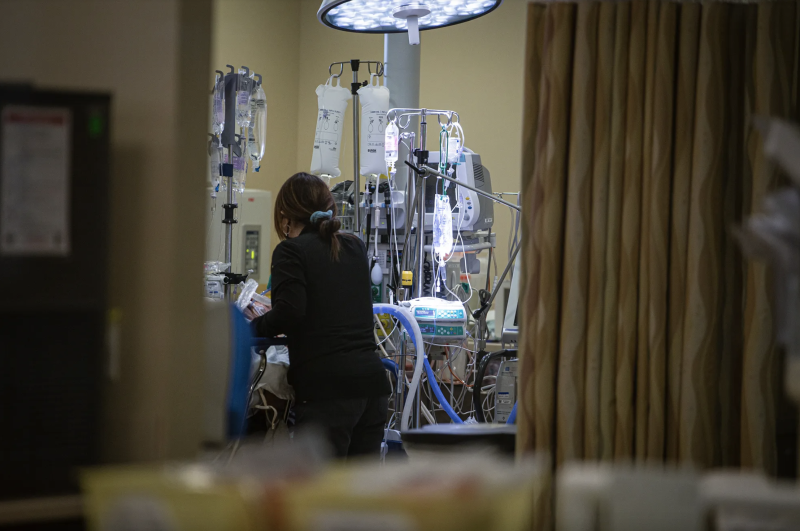Sen. Caroline Menjivar, a newly elected Democrat from Van Nuys and chairperson of the Senate budget subcommittee on health, criticized the governor’s plan for saving money “on the backs of our low-income communities.”
On his first day in office, Newsom proposed reinstating a tax on people without health insurance to fund increased subsidies for people who have Covered California insurance. A previous federal version of the tax had been repealed by the Trump administration the year prior, which contributed to a 24% drop in enrollment in Covered California plans (PDF).
New taxes always trigger a legislative skirmish, but this one gave even Democratic lawmakers and powerful advocacy groups pause: Theoretically, the tax would encourage more people to get health insurance, lowering the overall cost for everyone in the marketplace, but the penalty would come out of the pockets of the state’s poorest residents — those who forego insurance because it’s too expensive.
The Legislature ultimately approved the tax in 2019 with the understanding that the projected $1.4 billion in revenue over three years would be used to lower insurance costs.
The majority of that money, however, has stayed in the state’s general fund. Newsom has previously argued that the federal government’s more generous COVID-19 subsidies, which extend through 2025, render additional state spending unnecessary, especially at a time when California faces a growing deficit.
But legislators in both the Senate and the Assembly say that’s not what they voted for.
“The individual mandate was not intended to create funds for other government programs outside of health care from my perspective,” Assemblymember Jim Wood said during a recent budget subcommittee meeting. “I don’t think I would have supported it if that was the way I thought it would end up.”
Wood, a Democrat from Santa Rosa who leads the Assembly Health Committee, called the diversion to the general fund “a bitter pill to swallow.”
During the hearing, Department of Finance analyst Matt Aguilera argued using the money to alleviate the deficit would not impact current services under Covered California.
“Everybody is concerned about affordability. There’s agreement on that. Just due to the economic situation this may not be a good time to start up new programs,” Aguilera said.
But advocates argue using the revenue from the individual mandate penalty wouldn’t be new spending. It would be fulfilling an existing commitment.
Costs keep rising
Last year, in tandem with a measure to ensure the penalty money no longer got diverted, the Covered California board approved a plan to eliminate deductibles for the state’s mid-tier coverage option, which is widely considered the most cost-effective insurance option. When Newsom vetoed the policy bill (PDF), citing a “downturn in revenues,” the plan was abandoned.
“Last year this was a priority for everybody: the health plans, business groups, both the Assembly and Senate prioritized it in their budgets, health advocates, Covered California itself. Everybody lined up to support this,” said Rachel Linn Gish, communications director for Health Access California, a consumer advocacy lobbying group. “The only person we didn’t have was the governor.”
Instead, deductibles jumped from $3,700 for an individual and $7,400 for a family with a mid-tier plan (PDF) to $4,750 and $9,500, respectively (PDF). Health Access is sponsoring another measure this year to ensure money appropriated for Covered California affordability measures is used for that purpose.
“One of the most direct and impactful ways we can make sure consumers get health care access right now is by lowering the cost of care,” Linn Gish said. “The 2025 (federal subsidy) sunset was the governor’s main sticking point … but to us, it’s 2023. Why can’t we help people now?”
Senate Democrats also rejected delays and cuts to investments in the state’s health care workforce, including a $49.8 million cut to training programs for public health workers. Michelle Gibbons, executive director of the County Health Executives Association of California, said the money was sorely needed after decades of public health budget cuts left the state scrambling to respond to the COVID-19 pandemic.
“We can’t even begin to grow the pipeline of microbiologists, lab directors, epidemiologists — very skilled positions — without these programs and investments,” Gibbons said.
